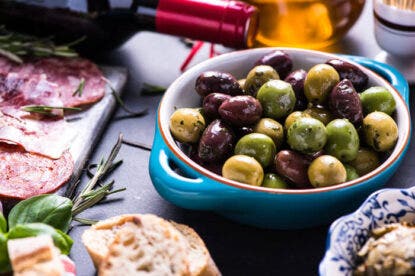Imagine breakfast without oat bran, a salad with no balsamic vinegar or mesclun, dessert without a molten chocolate cake, a fancy dinner without foam, food television with The Frugal Gourmet instead of Emeril, Yountville without Thomas Keller, Beaujolais Nouveau arriving on the Concorde, and the mighty 1985 Château Lynch-Bages just released for $25. There you have 1988.
The dawn of Bush Senior seems like just yesterday until you consider that the Cold War had not fully melted, broccoli had yet to be trashed and most people could not understand all this business about “extra virgins” dancing in their olive oil. White truffle oil was still a rare novelty poised to perfume every plate of food, and South African wines were undiscovered, hidden in the dark shadows of politics.
In 1988 it cost $40 to buy the 1984 Dominus from California, the first vintage of the joint venture between Christian Moueix and John Daniel’s daughters—Robin Lail and Marcia Smith— that had just been introduced at a lavish affair at New York’s Four Seasons restaurant, only to receive lukewarm reviews and praise for potential. Remember when the French and the Americans were looking for ways to cooperate? Joint ventures with the Italians were yet to happen.
Still, aside from these details, similarities with today’s world perhaps outweigh the differences. Consider, for example, that, in 1988, the stock market was sinking. Restaurants seemed to be closing faster than they were opening in many American cities. Chefs began paying attention to a new buzzword—value—piling plates high with pasta. In today’s climate, value has begun to mean the option, in steakhouse chains like Ruth’s Chris and Outback, of ordering a smaller slab of meat for less money.
Grazing on small plates of food was also new. Now in the form of tapas, grazing is back.
Not only was the stock market in decline in 1998, but so was the dollar. Travelers to France searched for bistro bargains instead of three-star blowouts. Still, the connoisseurs who closely followed what was happening on the international restaurant front began flocking to Monte Carlo, where the 31-year old Alain Ducasse had received his third Michelin star. It was a full year sooner than he had promised the owners of the Hotel de Paris. Ducasse, of course, has gone on to become the premier chef of this era.
Also in France, Larry Stone became the first American to win the title of International Best Sommelier in French Wines and Spirits. He is now one of America’s top sommeliers and wine list consultants. Then, white wine was still king. Today, wine tastes have evolved toward reds, Merlot is today’s Chardonnay, and American Pinot Noirs have become highly respected; they are often the wines of choice with an array of foods.
In 1988, on this side of the Atlantic, Jean-Georges Vongerichten’s career was launched with a four-star review in The New York Times for his work at the now-defunct Restaurant Lafayette. Charlie Trotter’s Chicago restaurant, open only a year, quickly established its reputation. And, in Los Angeles, Nobu Matsuhisa’s name had begun to surface. But Las Vegas as a fine dining venue, attracting chefs like Wolfgang Puck and restaurateurs like Piero Selvaggio? You must be kidding.
Some of the most remarkable changes that have occurred in the past 15 years, and which have made the often brilliant accomplishments of American chefs possible, have had to do with ingredients. Today’s pantry is richer and more environmentally responsible, largely because of many of the novelties that came on the scene around 1988. Pan-Asian and Pacific Rim were cutting-edge cuisines. They’re still around. And ingredients like fresh ginger, lemongrass and wasabi, once available only in ethnic markets, have become staples for many home cooks, not just chefs. Shoppers now buy them on the Internet.
By 1988 chefs were demanding haricots verts stateside, as well as Heirloom tomatoes, free-range chickens and California olive oils, inspiring farmers to comply and changing the nation’s market basket. Fifteen years ago, supermarket chains could not be bothered to sell organic produce. Today they must. Organic wines have become commonplace. Coffee drinking was down—Starbucks was not a factor—and tea-drinking was news.
In the late eighties, a few daring souls in the Hudson Valley started raising dairy sheep to make cheese at a time when artisinal American cheeses were a rarity. So-called Chilean sea bass had yet to appear in fish markets and yet to begin disappearing from the sea. Sushi, which once made Americans tremble, is now made on the spot in supermarkets to take home for dinner.
But some things never change. Robert Mondavi had a major birthday party. Riojas were high-quality bargain wines. And NBC-TV was trying to drum up interest in a show about a restaurant called Taittingers, while on CBS there was a sitcom about a New Orleans restaurant named Frank’s Place. Don’t remember them? In 2018, some 15 years from now, will we remember Rocco’s?
Published: September 1, 2003














